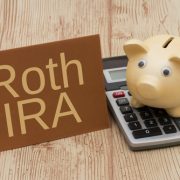The Fundamentals of Understanding Self-Directed IRAs
Many people have heard of Self-Directed IRAs. In fact, some people may even have Self-Directed IRAs that they do not do a lot with. But why do people avoid taking action on these powerful retirement strategies? Simple: they do not know what they do not know. To that end, it is important to explore why people use Self-Directed IRAs. What are the fundamentals? The aspects of Self-Directed IRAs investors need to know. You might be surprised at what people need to learn. And if that sounds like you, this post will serve as a great introduction to understanding Self-Directed IRAs.
Fundamental Fact #1: Self-Directed IRAs are Still Retirement Accounts
When people hear about Self-Directed IRAs and all the possibilities they contain, they get excited. It sounds like a personal account! Investing in real estate? Precious metals? Stocks, if you want to. It all sounds too good to be true. But the truth is, the tax benefits of Self-Directed IRAs are the same as any other retirement account. You have to adhere to some basic rules in order to realize those benefits.
For example, there are going to be early withdrawal penalties for investors who take distributions early. That includes a 10 percent excise tax on money withdrawn prior to 59 ½. In other words, if you have a before-tax Self-Directed IRA like a Traditional IRA, you will not be able to touch that money without an emergency situation or having to pay extra penalties on it. These penalties make it prohibitive to touch the money in the account, as is designed. You are supposed to keep that money set aside for retirement.
Fundamental Fact #2: Retirement Money is Not Personal Money
When you contribute money to a retirement account, it may seem like you are simply moving money from one account to another, but something very interesting has just happened. You have moved money away from your personal accounts to your retirement accounts. It may not sound like a lot, but as far as the IRS is concerned, there is a clear line of distinction. That retirement money is now separate from you. You might hold the account itself, but the funds within the account are separate, and only for retirement investing purposes.
What does that mean in practicality? It means that you cannot use retirement funds to make a personal investment, such as buying a house that you then let your sister or brother live in. Self-Directed IRAs give you plenty of leeway, but this is one key distinction that will help you avoid trouble down the line. Doing something like this could mean that you lose the retirement status on the account, or the funds themselves are considered early distributions, which comes with associated taxes and penalties.
Fundamental Fact #3: There Is No “Self-Directed IRA”
Sounds confusing, right? We talk about Self-Directed IRAs here all the time. But the truth is, there are all sorts of different accounts you should consider. A Self-Directed Traditional IRA is different from a Self-Directed Roth IRA, which in turn is separate from a Self-Directed Solo 401(k). This means that you will have to do some homework on which account type may be right for you.
However, if you do that due diligence and get a sense of what you want, the rest of the steps will be easier. Sometimes, you can easily convert money from one account type to another, depending on your circumstances. Interested in learning more about Self-Directed IRAs? Contact American IRA, LLC at 866-7500-IRA (472) for a free consultation. Download our free guides or visit us online at www.AmericanIRA.com.










